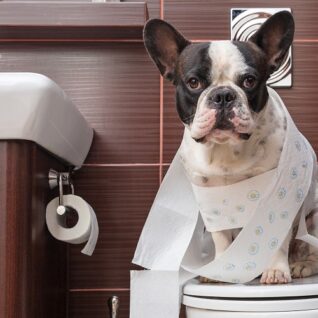Explanations Why You Have to Never Flush Animal Waste Down the Toilet
Explanations Why You Have to Never Flush Animal Waste Down the Toilet
Blog Article
Just about every person may have their personal idea on the subject of Don't Flush Your Pets Poo Down The Loo, Vet Warns.

When it concerns disposing of waste, particularly animal waste, many individuals typically consider the convenient option of flushing it down the toilet. However, this relatively easy remedy can have serious repercussions for the atmosphere and public health. In this post, we'll discover why flushing pet waste down the commode is a bad idea and offer alternate methods for appropriate disposal.
Introduction
Proper waste disposal is essential for keeping ecological sustainability and public health. While it may seem harmless to flush animal waste down the toilet, it can bring about numerous problems, both for the environment and human health.
Risks of flushing animal waste
Environmental effect
Flushing pet waste presents damaging bacteria and microorganisms right into rivers, which can adversely influence water ecosystems. These virus can contaminate water resources and injury marine life, interfering with fragile ecosystems.
Public health issues
Animal waste has dangerous germs such as E. coli and Salmonella, which can present significant wellness threats to people. Flushing animal waste down the toilet can contaminate water products, bring about the spread of illness and infections.
Alternatives to flushing
Rather than flushing animal waste down the commode, there are a number of alternative disposal techniques that are much more environmentally friendly and sanitary.
Composting
Composting animal waste is an eco-friendly means to throw away it. By composting, organic matter is broken down right into nutrient-rich soil, which can be utilized to fertilize yards and plants.
Land fill disposal
Taking care of animal waste in a land fill is another choice. While not as eco-friendly as composting, it is a safer option to flushing, as it protects against the contamination of water sources.
Animal garbage disposal systems
There are specialized family pet garbage disposal systems readily available that securely and hygienically deal with animal waste. These systems usually use enzymes to break down waste and eliminate odors.
Steps to correct pet garbage disposal
To make sure appropriate disposal of animal waste, follow these steps:
Scooping and getting waste
Consistently scoop and bag pet waste using naturally degradable bags. This avoids waste from contaminating the setting.
Using designated waste bins
Dispose of bagged pet waste in marked waste bins, such as compost bins or land fill containers. Avoid flushing it down the commode at all expenses.
Cleaning up litter boxes and family pet areas consistently
On a regular basis tidy can and pet dog locations to prevent the accumulation of waste and germs. Usage pet-safe cleaning items to maintain health.
Advantages of proper disposal techniques
Embracing proper disposal approaches for animal waste uses numerous advantages:
Decreased environmental pollution
Proper disposal approaches reduce the risk of environmental pollution, securing waterways and environments from contamination
Lessened danger of water contamination.
By staying clear of flushing pet waste down the commode, the threat of water contamination is dramatically reduced, protecting public health.
Improved sanitation and hygiene
Appropriate disposal techniques promote far better cleanliness and health, developing a much safer environment for here both people and pets.
Final thought
In conclusion, purging pet waste down the commode is unsafe to the atmosphere and public health. By taking on alternate disposal approaches and complying with correct waste management methods, we can decrease the negative effect of pet waste and contribute to a cleaner, healthier world.
What To Do With Dog Poo – The Do's And Don'ts Of Disposing Of Faeces
Dog poo bins
Some councils provide dedicated dog waste bins in popular dog-walking areas that can take dog poo that has been bagged but you can legally dispose of dog waste in any public litter bin, as long as it is securely bagged. This also applies to your wheelie bin at home.
Do not flush
Water companies do not recommend flushing dog faeces down the toilet because certain parasites can survive the water processing treatment and are potentially harmful to humans. You should also never consider flushing dog poo that has been bagged down the toilet as the bags will not break down and instead create severe blockages in the sewage system.
In the woods
The Forestry Commission promotes a ‘stick and flick’ method for dealing with waste in the woods. This means finding a stick and using it to flick any poo from off the path so that it is out of the way of other walkers. You could also bury it as long as it is not in an area where there might be livestock.
Livestock
Parasites found in dog poo can be transmitted to livestock if they inadvertently eat infected faeces that has been left on grazing land. This could result in the death of sheep or abortion in cattle so you should always make sure you pick up your dog’s waste in fields where livestock could be present.

I am just very drawn to and I really hope you appreciated my article. Do you know about somebody else who is sincerely interested in Why you should never flush dog poop down the toilet? Take a moment to promote it. Thanks so much for your time spent reading it.
Get A Free Quote Report this page